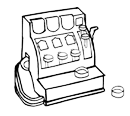How to care for your breasts during pregnancy and breastfeeding?
The truth is, your breasts deserve your full attention from the very start of your pregnancy, and even more so after lif you decide to breastfeed. A particularly vulnerable area of the body, the breasts are exposed in the event of a shock, since they are not protected by bones (unlike most vital organs), and the skin covering them is fragile because it is supported by very few muscles. The size and shape of the breasts are therefore particularly sensitive to the effects of gravity, weight gain and the passage of time. To preserve the beauty of your breasts for as long as possible, and s'to ensure comfortable breastfeeding, there are some simple tips that have been tried and tested by Milk Away Mums.
Before, during and after pregnancy
Breasts are often the forgotten part of beauty routines. However, they also deserve to be the focus of your attention, whether you are pregnant or not.
- Treatments and massages
To slow l'the inevitable appearance of the first signs of l'age, i.e. fine lines, pigmentation spots and sagging skin, it's a good idea to give your breasts as much attention as your face. Every day, we remember to cleanse the area with gentle products that respect the skin's pH without l'drying it out. Avoid coarse scrubs (which can scratch the skin, making it more fragile) and aggressive peels. At l'application of various facial care products, stretch serums and other anti-aging moisturizers right down to the bust and breasts. Priority is given to formulas with tightening and firming extracts, and a massage gesture in 8's at l'horizontal (like the l'infinity ∞ sign) is used to activate blood circulation and boost collagen production.
During pregnancy (but also after the childbirth and from the start of breastfeeding), breasts will naturally swell, which is why moisturizing and anti-stretch mark oils are preferred (see our article on natural skin care products to use during pregnancy). For some women, it's just one size, for others it's two or three. Here again, we're not all equal. For small-breasted mums-to-be, who've been dreaming of a brand-new décolleté for a few months, the increase in volume will be a joy, but for those who already have opulent breasts and can't fit into any underwear, it's a nightmare - not to mention the backache that often afflicts those with generous breasts. So why does Mother Nature have it in for us? Wasn't having a big belly that prevents us from seeing our toes and deprives us of sleep and dignity in our movements, not to mention building a miniature human being from scratch right in the middle of our vital organs? And then there's l'the ambush of the chest that heats up, pulls and triples in volume? In short, all this just confirms that women are warriors, superheroes, wonder Mums and their bodies are ultra-sophisticated war machines. Who can do better than a uterus and breasts? Well, nothing and nobody! That's all there is to it.
After pregnancy and breastfeeding, continue l'application of l'anti-stretch mark oil for a few weeks or months, to allow the breasts to deflate and avoid any late skin tearing.
" Concerning l'the appearance of stretch marks, I was (let's not mince words) completely obsessed. So I spent my nine months of pregnancy spreading oil from my shoulders to my toes. Morning, evening and sometimes even lunchtime when I was homeworking. My man mhad given me a sexy nickname: the doughnut. So it was with great pride that I came home from the maternity ward with my daughter in my arms, proclaiming loud and clear to anyone who would listen lthat I hadn't had a single stretch mark during my pregnancy. I chose to breastfeed and, after the milk came in, my breasts started to swell, much more than during my pregnancy, and that's when it happened! I swore a lot, and even shed a little tear as my breasts s'became zebra-shaped in just ten days. So, as a good friend, I'm passing the word on to my neighbor: we're continuing the anti-stretch mark treatment after the childbirth and certainly during breastfeeding. " Marie-Noëlle, Milk Away MUM.
- Appropriate underwear
This is the basis. As soon as the breasts appear, in adolescence, one invests in good underwear adapted to the size and weight of the breasts. You should pay attention to the width of the straps to avoid chafing on the shoulders and back pain, the position of the clips, the seams on the pockets, etc. A bra must by definition be supportive and comfortable to wear; at the slightest injury, you change without hesitation. Yes, it's an investment, but it's far too important, from adolescence to pregnancy, through breastfeeding and the menopause. Check the quality of your underwear regularly. It is common during pregnancy and breastfeeding that the increase in breast size causes real discomfort and that whalebone bras become a real torture device. Fortunately, there are some great underwear brands that offer nice underwear without underwire #mercimondieu.
- Maintenance exercises
Yes, you can give your chest a workout, or more precisely, the muscles under and around it - the pectorals. The higher and more rounded they are, the better your breasts will look. The good news is that it only takes a few minutes a day to see a difference over the long term. Stand in front of a mirror, shoulders back land back straight. Then bring your hands together, palm to palm, to form a gesture of prayer. Forearms and elbows down. Begin by pressing palms together l'one against l'the other. At the same time, the elbows are pulled apart and up towards the top of the body. Repeat l'exercise for two to five consecutive minutes. Do as often as possible.
- A jet of cold water
Spraying your breasts with cold water can boost their firmness and improve blood circulation (and make you squeal too) but personally, at Milk Away, we don't like to suffer to look good. Why not? Because we lare already beautiful. l'idea is to stay that way for as long as possible, but as gently as possible.
During breastfeeding
The breasts are going to be put under extreme strain. That's why you need to take the utmost care of them and listen to your body as much as possible l. No one knows better than you whether you're feeling well or not, so trust yourself! Lnfant feeding is a real personal and family adventure; for some, it's a breeze to get going. For others, breastfeeding requires a few adjustments. You have to find your own rhythm (your baby's rhythm is generally based on a little craving every hour and a half; stomachs on legs, we tell you!), your preferred position, sometimes adjusting your diet (certain foods and drinks encourage or slow down milk production to best suit your little one's needs) and sometimes overcoming a few minor setbacks such as breast tension, cracks, engorgement and mastitis. Because, yes, Mother Nature didn't think getting pregnant, carrying a pregnancy to term, giving birth and undergoing a hormonal tsunami was enough. One thing's for sure, we women are all going to heaven, believe us!
In any case, if you're feeling stressed, it's a good idea to surround yourself with people who are qualified in the subject, and to be monitored by a nurse or midwife specializing in lactation. Sometimes, what seems like a mountain can in fact be quickly resolved with the right advice. On average, in France, breastfeeding lasts seven weeks, and many women stop not because they want to, but because of a lack of information and support, or for practical reasons such as taking their baby to nursery school, going back to work or difficulties with breastfeeding. These are all bad reasons for depriving yourself of these special moments with your baby, because there are solutions.
- The daily shower
As your breasts will be in regular contact with your baby's mouth, we recommend that you pay particular attention to your hygiene and shower once a day, preferably with a neutral, odorless soap. Breast milk contains a thousand and one marvels: vitamins, minerals and proteins to help your baby fight off bacteria and viruses. It's also packed with antibodies, enzymes, amino acids, taurine and other hormones. lA whole essential ecosystem that promotes l's general immunity (see also: our article on the benefits of breastfeeding), but which can also germinate if residues remain on the nipples for several hours or days.
- Natural care
We also advise you use products that are as natural as possible and preferably organic. And here's a good surprise: you should know that the most effective and most economical skin care product is: your own breast milk! This is further proof that nature is good. As a preventive measure, after each feeding or pumping, a few drops are extracted and spread on the nipple to preserve it. On the other hand, you should avoid having your baby suckle just after applying a treatment. Your smell is his cuddly toy, so avoid sticking a greasy breast under his nose if he doesn't recognise the familiar scent. You can even take advantage of your new care and massage rituals to involve your partner and make the moment more complicit if you have the desire ... and the energy.
- Some recommended natural treatments for minor breastfeeding injuries
- Aloe vera gel as a moisturiser and soother.
- Sweet almond oil as a moisturiser.
- Organic lanolin, ideal against irritation and nipple cracks.
- Breast milk (as a compress).
- Clay mixed with vegetable oil (as a compress) to relieve tension, irritation and other pains.
- Medicinal honey (sterilised honey sold in pharmacies) can be used as a powerful antiseptic.
- Silicone shells with their freshening effect to relieve the nipples and collect the milk flow.
Everything is going to be fine and don't forget: la crème de la crème (link to the jumper on leshop) of mums is you!
#milkawayapparel #inmumwetrust #breasfeeding #breastfeedingmom #breastfeedingjourney





